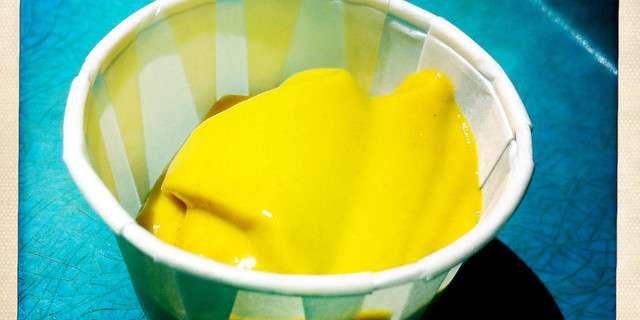
Image Credit: Flickr User Purblind
Matt’s pulse was pounding. Sweat was beginning to collect at his temples. Just so slightly, his fingers were shaking. He stared at the hot dog. Could he do it? “What’s the matter?” asked Jen, and Matt turned to look in her eyes. She was beautiful. And kind. And funny. And she liked baseball. Matt had to be cool. He couldn’t look like an idiot. He smiled. “Nothing’s the matter,” he said. But something was. On his hot dog, the mustard was the wrong shade of yellow. It wasn’t wrong by much, but it was enough. He couldn’t eat it. “Are you sure?” asked Jen. “You’re staring at your hot dog. Is it okay?” This was only the second date. Coincidentally, it was the second date Matt had had all year. If he didn’t eat the hot dog, she would think he was a weirdo. She wouldn’t date a weirdo. He had to eat the hot dog. But how could he eat the hot dog? The mustard was the wrong color!

What’s a hot dog without yellow mustard? Image Credit: Flickr User stu_spivak



